Late in the 14th century, a group of Italian thinkers declared that they lived in an era called the New Age. According to them, the ferocious, superstitious Middle Ages were long gone, and the new age of learning art, literature, and culture was reborn. This simple fact was the trigger of the Italian Renaissance revolution.
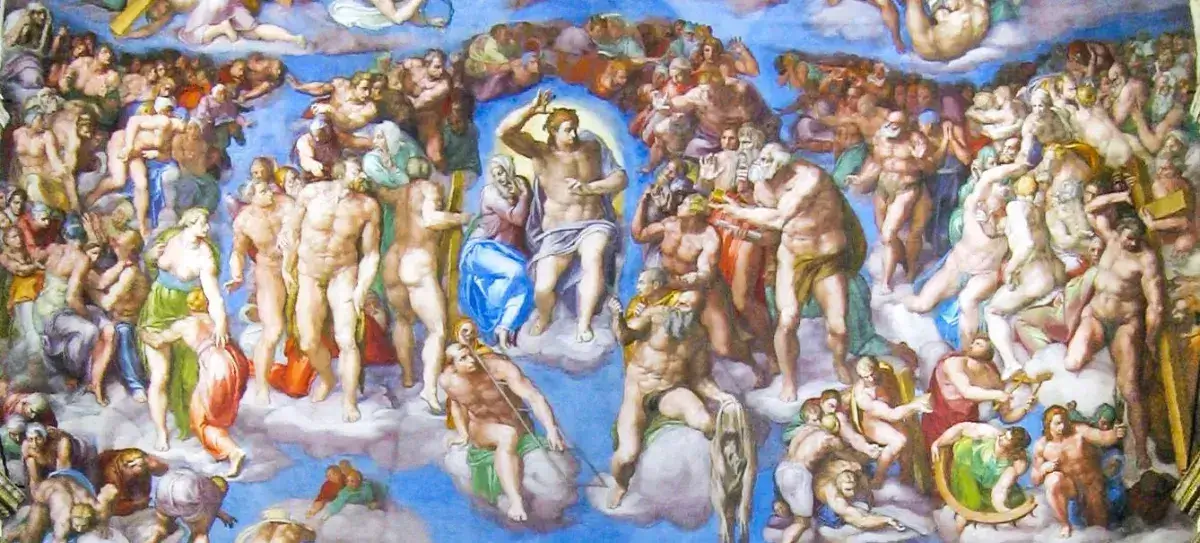
Michelangelo Buonarroti, The Last Judgement, c. 1541, Rome, Sistine Chapel
It was the rebirth of a period currently referred to as the Renaissance, another word for renewal. Several scholars concur that between the 14th century and 17th century, a new enlightened way of thinking was emerging in the world that replaced the archaic one. However, many artistic, cultural, and scientific discoveries of the Renaissance had common themes, believing that man was the center of his universe as prominent.
Early Italian Renaissance
Giotto and Cimabue propagate realism, reject Byzantine religious paintings, and push for authenticity, depicting human form and space.
Realism peaked with the coming of artists such as Paolo Uccello and Andrea Mantegna, who are known for using a one-point perspective. Using their education and art knowledge, they mesmerized many with their work. There was a change in the subject matter in drawing and painting during the early Italian Renaissance. Religion shaped and influenced many artistic works since it was a predominant element in almost everyone who lived.
However, new avenues such as the mythological matter were opening up for painting. According to scholars, one such painting on a mythological subject was Botticelli’s work Birth of Venus, which was among the first of its kind. This deviation from religious painting to realism and mythological subjects opened a world for other artistic imaginations, themes, and production.
High Italian Renaissance
This period began in the 1490s with Leonardo Fresco. It ended with the Sack of Rome by the army of Charles V in 1527. The term High Renaissance was coined because scholars believe that the goals and aspiration of medieval artistry reached their most fantastic applications. The shift from a point perspective to classical art and the application of development characterize this stage of history. The age of the high Italian Renaissance was predominated by three musketeers. Michelangelo, Leonardo da Vinci and Raphael.
Michelangelo had prowess in painting, sculpturing, and architecture, demonstrating his mastery of the human body. Rafael was respected for his way of creating perspective and for his articulate use of color. The famous Leonardo da Vinci is known for his two most popular paintings: the Mona Lisa and The Last Supper. Though he came after Michelangelo and Rafael, his artistic works are consistent with the High Renaissance styles. Many renowned Roman-Greek sculptures and the classical buildings’ reinvention owe their discovery to the Italian Renaissance.
However, the achievements of these guys could not be famous without the achievement of their predecessors. Giotto was one such artist who improved his work by adding weight and personality to his sculptures. The quote he is remembered for: “Giotto makes massive Madonnas.” Masaccio, a talented artist and brilliant mathematician, was an early contributor to the arts’ linear perspective. He and many others like him were also prominent during the Italian Renaissance age.
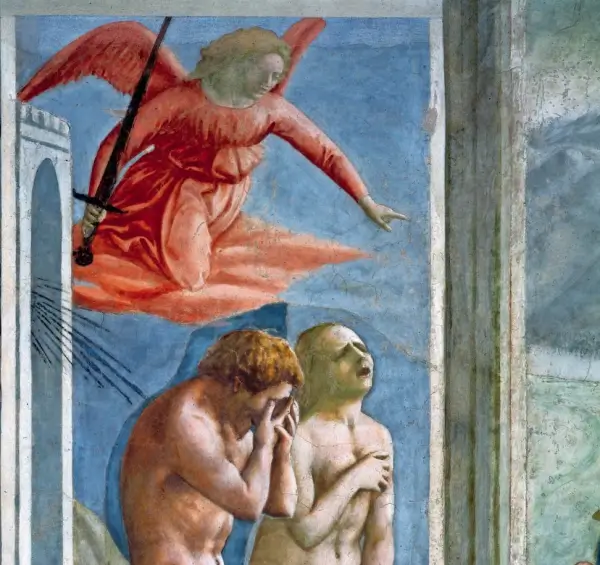
Filippo Brunelleschi adopted Roman architectural elements using Roman columns, shapes, and proportions in building his statues. He is revered for his eight-sided dome in Florence built at the Santa Maria del Fiore. This structure was considered an engineering triumph – weighing 37,000 tons, 144 feet long, and with no buttresses to support it up.
The artist Leon Battista Alberti demonstrated the principles Filippo Brunelleschi used in his linear perspective in his essay entitled “On painting,” which was widely known and used in almost all the Renaissance-era paintings. However, later some painters employed another painting technique called Chiaroscuro, creating an illusion of the 3D space on a flat canvas. These painters, architects, and artists created inspirational art that would shape the thinking of the future artist.
Renaissance Patrons in Florence
During the 15th century, Italy was unique in Europe, with independent city states having different governments. Florence was known for the birth of the Renaissance and was considered an independent nation. It boasted several banks at the time, Italy’s commercial capital, and the third-largest city in Europe. The wealthy lived in this city, flaunting their economic might and political power through art. They became patrons who supported intellectuals and artists with their money, making the city the cultural center of Renaissance and Europe.
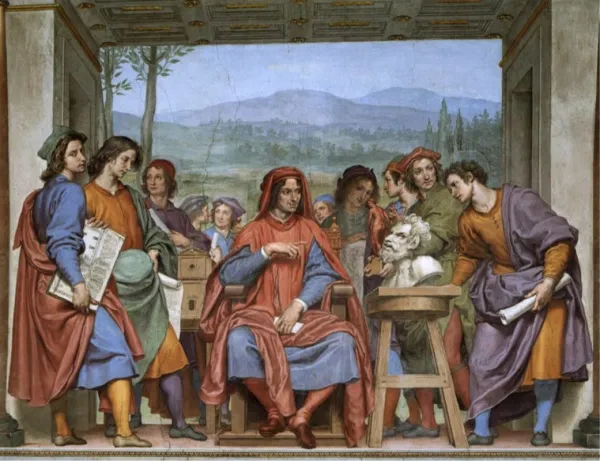
One such patron was the Medici family, known for its banking prowess in Florence and political dynasty. They were prominent patrons in the 15th century and supported art in Italy, and gave substantial financial support to the Catholic Church. With the help of cardinals and popes in the family, the Medici family would juggle between the Renaissance and the Church to maintain dominance as patrons of the arts. One such artist supported financially by the Medici was Botticelli, a Lorenzo circle of poets. Botticelli’s ghostly paintings attracted many scholars as he depicted his subjects, both religious and mythical, with mystery and lyrics. Despite their fascination with pagan subjects in the arts, most citizens in Florence remained deeply religious.
Famous priest Savonarola attacked the depiction of ancient God’s amorality and luxury in his sermons, wooing huge crowds and followers, including Botticelli, who desisted from mythological subjects. The rivalry between Italian cities such as Venice, Mantua, Florence, and Siena also contributed to the artistic works. Each city looked for new art to improve its status within Italy and the world. This rivalry led to some artists poaching to work in other cities, and it is this poaching gave birth to the signing of portraits by the artists to add to their expanding reputation.
The Biblical Subject Matter of Art
By the 13th and 14th-century painters produced religious arts, and churches were massive fans of these arts. The Church was a significant patron of these religious paintings and bought a majority to build respect and awe. The stories depicted in the arts and the sculptures enabled many faithful who could not read to envision the drawings.
Another objective for purchasing these paintings was the Church’s desire to encourage devotion and move the masses to salvation. Artists deployed the use of humanistic subjects and the day-to-day settings to achieve these objectives. The paintings placed religious figures and the scenes they appeared in conditions similar to the viewers and this strike accord with churchgoers.
Giotto also made a religious painting popularly known as Madonna Enthroned at the Uffizi Gallery in Florence. Several years after him, artists used the famous Biblical narrative of the David and Goliath battle to depict Florence’s domination over Milan. The painting hoped to illustrate how the Tuscan city of Florence was competing with the large town of Milan. On the other hand, Michelangelo, telling the same storyline, chooses to focus on David’s concentration and learn to conform with the Italian Renaissance’s new emphasis on the pursuit of knowledge.
Stability and Symmetry composition
Italian Renaissance characteristics of symmetrical composition and stability are evident in the portraits of early artists. Shapes such as the love triangle and the pyramid can be said to be stable.
The drawings of Leonardo da Vinci entitled The Last supper are a perfect example of this stability. Michelangelo’s portrait, known as Pietà, in which Mary tenderly holds lord Jesus’ body after it is removed from the stake, is a drawing with symmetric composition. These artists based their pictures on a circle or triangle, believing that mathematics associated geometric perfection with cycles.
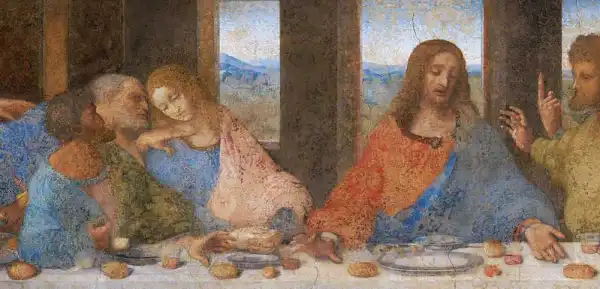
No wonder wealthy individuals of the time imitated the Roman style of building by having all sides of their houses attached to the courtyard.
Mathematics and Artistry
During the Italian Renaissance, most artists were also mathematicians. The successful use of a one-point perspective by Masaccio in the Holy Trinity drawing is probably the most significant advancement of the time.
By 1502, Donato Bramante, the architect in Rome, built around the temple at a spot thought to be where the apostle Peter died and dedicated the temple to the apostle. The structure is precisely made, showing that every aspect and the temple’s details were painstakingly proportioned to attain complete harmony, symmetry, and stability.
Another piece of art that employed mathematics is the Pazzi Chapel in the city of Florence. It is possible to break its frontage into square sub-shapes, circles, and rectangles. Since it was considered very geometrical, symmetrical, and proportional in all aspects, it reflected the divine having no flaws. Through the use of mathematics, the artists were trying to design God in the paintings and buildings.
The advancement in mathematics gave rise to the construction of the dome. Santa Maria del Fiore is an example of such a massive building, also referred to as the Duomo, designed by Filippo Brunelleschi. His design had a dual dome, and this drew huge attention since, before him, the Florentine cathedral had nothing to cover its large covering.
Italian Renaissance as Classical Subjects
The artists who painted portraits on biblical subjects did the classical ones. One such classical painting is that of Sandro Botticelli named The Birth Of Venus. In this picture, he portrays the birth of Venus from the sea and then carried by the waves to shore naked, waiting for clothes. Setting your eyes on it, you are struck by its beauty. However, her neck is weirdly big, and her arms are abnormally long. This distortion of the body intends to create ideal classical beauty as thought by the revived design.
Raphael was also a significant contributor to the classics as he crammed all the works of famous classical minds in his work The School of Athens, which in many scholars’ eyes is the zenith of Renaissance perfection. In his drawing, he shows Aristotle and Plato to emphasize the value of everybody who has intellectually contributed to society. Using a point perspective, he put the minds in one space that significantly resembled the interior design of St, Peter’s Basilica.
Why is Brunelleschi Considered such a Significant Contributor to Renaissance Architecture?
The Renaissance period, marked by the revival of arts and learning, was a pivotal time that ushered in a new era of creative expression and intellectual growth. Among the luminaries of this period, Filippo Brunelleschi shone as a beacon of innovation in architecture, contributing significantly to the transformation of building design and spatial understanding.
His legacy is steeped not only in the physical structures he pioneered but the foundational principles that influence architectural thought to this day. This article will closely examine Brunelleschi's impact on Renaissance architecture, exploring the reasons why he is revered as one of the era's most influential architects.
Italian Renaissance and the Principles of Geometry and Perspective
At the heart of Brunelleschi's revolution was his profound grasp of geometry and perspective, which was at the time, an overlooked and underestimated aspect of architectural design. His extensive study of classical buildings in Rome and a deep understanding of ancient texts allowed him to resurrect the principles of the past and fuse them with innovative ideas.
The Dome of the Florence Cathedral
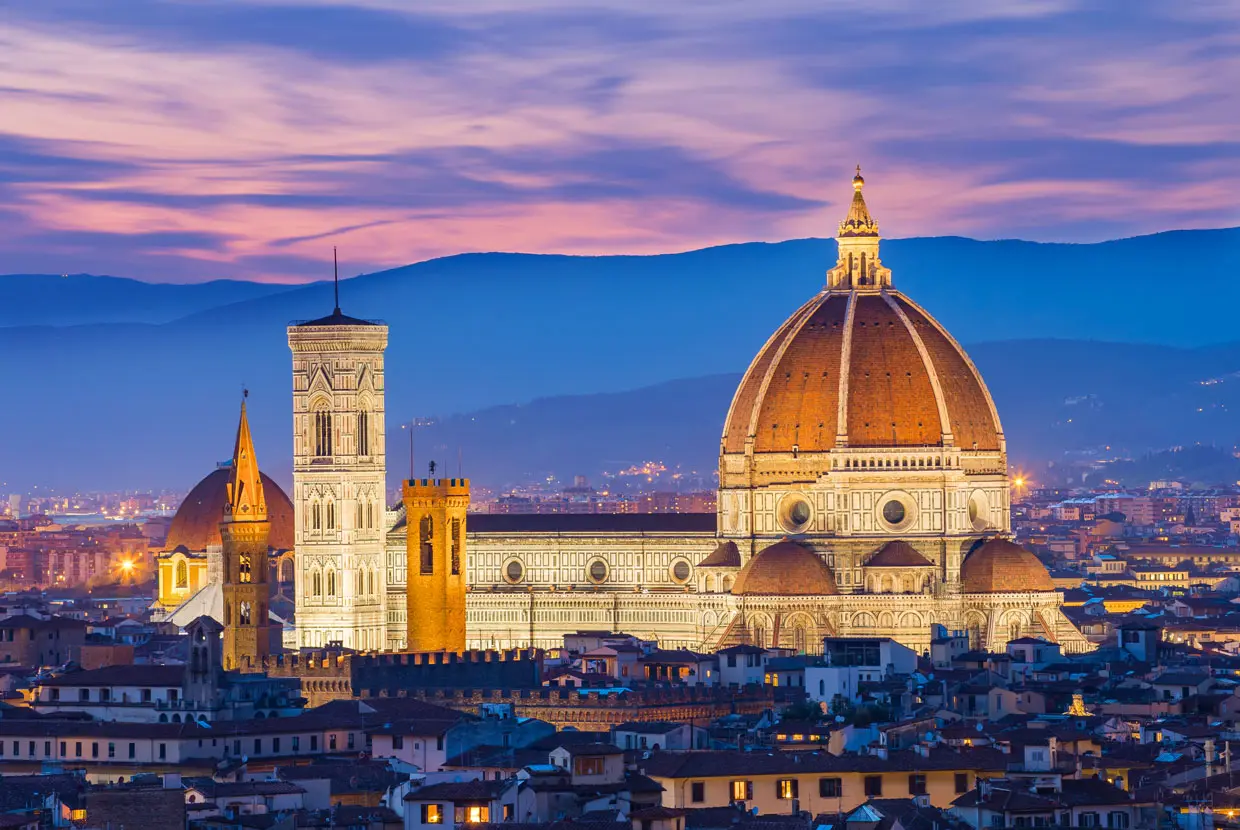
Undoubtedly, Brunelleschi's most celebrated work is the soaring dome of the Florence Cathedral. The ambitious construction, which elegantly crowns one of the most significant religious buildings of the time, is a testament to his expertise. Overcoming structural and engineering challenges, the dome's self-supporting double-shell design is an engineering marvel, a physical embodiment of the expansive spiritual and aspirational ethos of the Renaissance.
The Pazzi Chapel
In contrast to the grandiosity of the cathedral dome, Brunelleschi also designed the Pazzi Chapel with incredible attention to detail and a focus on harmony and proportion. The chapel, located in the heart of Florence, is a jewel box example of classical values reinterpreted through a contemporary lens. Its central plan layout, coupled with a sense of lightness and spatial coherence, creates an intimate yet grand space that illustrates his mastery of perspective and form.
Revolutionizing Architectural Techniques and Innovation
Brunelleschi's genius extended beyond theoretical understanding to practical application, challenging the status quo of construction methods. His innovative use of materials and approaches to building set new standards for the field of architecture.
The Rediscovery of Linear Perspective in Frescoes
A pivotal moment in the history of art and architecture was Brunelleschi's rediscovery of linear perspective, a technique that allowed for a more accurate representation of three-dimensional space on a two-dimensional surface. This breakthrough, first exemplified in his work, turned the art world upside down and underscored the interconnectedness of art and architecture, both in theory and practice.
The Ospedale degli Innocenti
The Ospedale degli Innocenti, designed as an orphanage, showcases Brunelleschi's pioneering use of Renaissance architectural features. His design for the façade, characterized by balanced bays and classical columns, demonstrates a departure from the Gothic aesthetics of the time, emphasizing clarity, order, and the classical language of architecture. The building stood as a precursor to the Palladian style that would come to define much of Renaissance and later classical architecture.
Bridging the Past and the Future
Brunelleschi's work acted as a bridge between the Gothic era and the full flowering of the Renaissance. By reviving classical forms and blending them with contemporary needs and materials, he provided a foundation on which the great architects of the Renaissance could build.
Influencing Future Styles and Architects
Brunelleschi's emphasis on proportion, harmony, and classical order had a profound influence on succeeding generations of architects, including his contemporaries and those who followed. His legacy can be seen in the works of Leonardo da Vinci, Michelangelo, and Raphael, each of whom pushed the boundaries in their respective disciplines, inspired by the intellectual and artistic climate he helped shape.
The Legacy of His Theorization
Beyond the buildings themselves, Brunelleschi's legacy lies in his contribution to architectural theory. Through his treatises and documented practices, he left behind a body of work that elucidated principles that went on to underpin much of the Renaissance's built environment. This theoretical foundation was as much a part of his gift to the world as the physical structures he brought into being.
The Perfection of Man in the Italian Renaissance
The advancement in architecture, mathematics, and intellect made men overthink themselves. The intellectuals started to admire their achievements and view the humankind species as nearing creation perfection.
Michelangelo’s work he dubbed The “Creation of Adam,” is a famous Italian Renaissance moment. In this work, he shows Adam dangerously close to touching God’s finger. The drawing depicts Adam having the same muscular body as God, equal in height, same size, and almost touching. Note, however, that before this drawing, God was considered a super scary and judgemental person. The portrait and the title thereof created the idea, that God is like us, and we like him.
Leonardo da Vinci continued with this same concept in his work Vitruvian Man, where he perfectly fits man in a circle and square. Providing man’s picture on these perfect mathematical figures was interesting since they represent the divine in their perfection. Such drawing would elicit a conclusion that man is closer to perfection and divine himself.
The New Humanism in the Italian Renaissance
With the help of scholars, we can study the Renaissance era to discover the lifestyle and the morals of people in the 14th century.
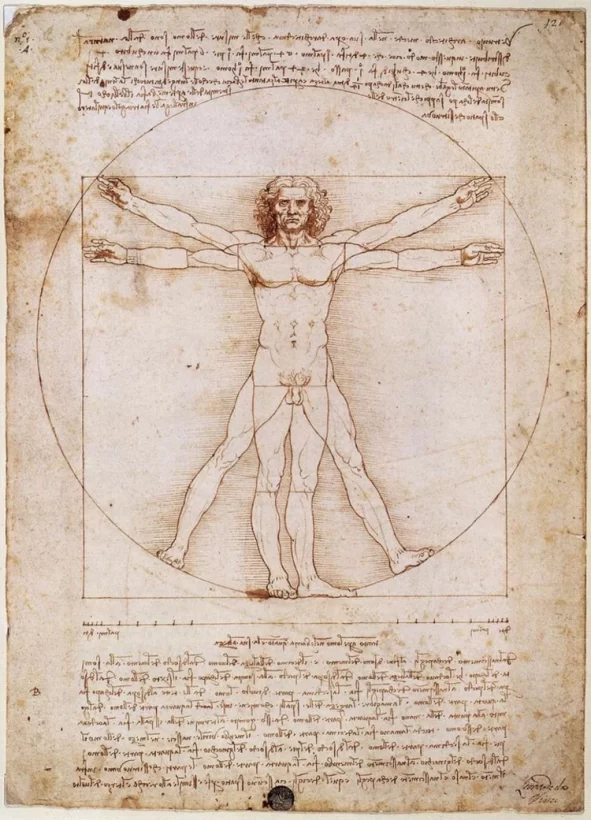
Humanism is a learning system that originated in Italy during the 13th century and spread to other parts of Europe and England. Italian Renaissance humanism was very influential in the early century, and its contribution to history immensely made the Renaissance a unique historical period. Humanism had its roots in earlier times than it is a famous era and continues to be influential. The wisdom, secularism, and the way individuals in that time appreciated physical beauty and man’s accomplishment is coined in the word humanism by Renaissance scholars.
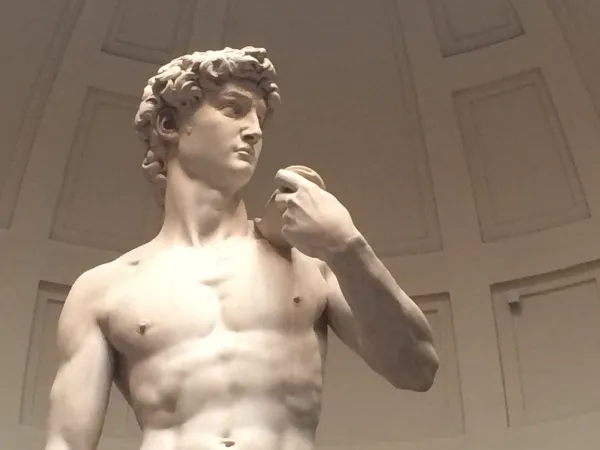
Renaissance humanism influenced such men’s artistic work as Michelangelo, Rafael, Leonardo da Vinci, Donatello, and Botticelli. These painters and sculptors lived the perfect representation of the Renaissance man by excelling in their discipline. They founded new techniques and channeled the path of innovation as they set the bar for artistry and thus signaled as masters of their rights. Humanism is responsible for creating new subject matter for arts in the 15th century in which studies is done on the literary arts, painting, social tracts, and sculpture. It is responsible for elevating the establishment of aesthetic beauty and geometry by classical intellects.
Renaissance humanism artists are known for leading in the revolutionary artistic ways in which the industry witnessed a shift from a linear perspective in drawing to trompe l’oeil and the invention of illusionary space.
New genres also came up due to humanism, such as landscape, self-portraiture, and frontal portraiture. During this period, man became self-reliant, adopted dignity and uniqueness, and valued human life. The wealthy patrons enjoyed promoting artists to help them continue inventing new arts from science to architecture—humanity at its best in those days’ thriving economy. The Renaissance man emphasized the value of education and the viability of the traditional culture and exploration. These attitudes form the basic foundation of Western civilization and the world’s culture.
Humanism gave rise to critical thinking and questioning of received wisdom, especially those by the medieval Church. The use of logic and reason was on the increase through experimentation and research to solve humanity’s woes. It was during this era that many Renaissance intellectuals concentrated on defining the laws of nature. Artist Leonardo da Vinci, for example, performed a series of scientific studies ranging from submarines to flying machines. He is also known to have pioneered the research of the human body.
The Birth of Renaissance Science and Technology
The birth of technology began through the spirit of inquiry that was dominant during this period. The theoretical approach to knowledge gave birth to the scientific process. Popular methods used during the medieval structures such as single structure and research deteriorated with the new scientific approach.
This pressure for intellectual achievement had been pumped by the rise of new universities founded in the late middle ages. As a result of these, new departments such as law and medicine brought about intellectual freedom. To this end, many discoveries were made, which brought a man to a wholly unique experience. Additionally, material things Introduced to Europe from the East became a significant boost to the distribution of information.
The invention of printing made available classical manuscripts; to this end, a sufficient supply of books gave people the impetus to search for knowledge. New concepts began to be introduced by great men and would be readily available to intellects. In 1545, for instance, the cubic equation in algebra, solved by N. Targalia, was published and generalized by G. Cardano.
In those days, knowledge acquired from a theoretical approach to scientific studies increased tremendously, advancing inventions. The search for new intellectual achievement in science experienced tremendous growth due to the rise of universities developed in the late Middle Ages. The information age added to this exponential growth in knowledge as data could be shared among scholars. Printing technology by the German Johannes Gutenberg also made the printing of manuscripts distribution easy throughout Europe, advancing knowledge.
Why is the Italian Renaissance Important?
The fascinating period covering the 13th and the 16th century in Italy is worth studying. During this period, the artistic level and the architectural bounds are mind-boggling so much that several works produced by the Renaissance artists capture our eyes today. The study of this period is not only engaging but also educative for the modern generation.
One reason to study the Renaissance is it allows one to inspect the past to gain insight and inspiration. Looking into our past can teach us a lot of things as we learn from past cultures. In the Renaissance, individuals looked into the past generation to acquire wisdom on how to live in the present.
They searched for the Greeks and Romans who experienced civilization earlier than the Renaissance era. The lessons they gathered from such a dive back into their ancestral history helped them channel their path.
Each generation indeed faces different hurdles; however, the same fundamental problems persist. We face similar economic, political, and social issues, and by looking at how solutions for these problems came by, we can use a similar approach to solve the current ones. By looking into past generations’ mistakes, we can learn how to avoid a similar pattern.
Renaissance can encourage continual innovation. Leaders of that time looked forward in their thinking which led to several inventions of that age. Though scientific discoveries were centuries away from this generation, a keen look at the Renaissance saw a push towards innovation to find solutions for existing problems. In their artistic world, one can see the exploration of single-line perspective principles that created more realistic illusions in sculptures and paintings.
The End of the Italian Renaissance
According to several scholars, the demise of the Renaissance as a result of several factors. Numerous wars plagued Italy by the end of the 15th century, with invading armies from France, Spain, and Germany causing instability and disruption in the region.
Changing trade routes resulted in economic decline and the money that the wealthy used to buy art dried. Another factor was the Counter-Reformation movement by the Church that cut off buying art from writers and artists. Many Renaissance creators and artists held back from being bold fearing punishment, and this stifled creativity. The council of Trent formed the Roman Inquisition, which made propagates of humanism subject to questioning
Conclusion
The Renaissance period was an exciting time with several discoveries. Covering the 14th to 16th century in Italy and Europe, this period is famous for displaying art paintings and sculptures.
Looking back into the challenges and the achievement of this generation inspires us to innovate and reach greater heights. Though the Renaissance period ended with wars in Italy, it left its mark on the history map as one of humanity’s influential ages.
If you want to add your personal piece of Italian Renaissance to your home, look for breathtaking Fine Art Photographs at Paolo Modena Photography
Editor's note: this post was originally published in March 2023 and has been completely revamped and updated for accuracy and comprehensiveness.

